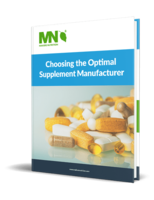System Model Software supports mobile mutlimedia.
Share:
Press Release Summary:
Virtual Platform VPOM-V1030 uses C-code, graphical modeling, and transaction-based modeling to replicate functionality of TI's OMAPV1030 chipset in PC-based simulation. Functionality includes operation of ARM and DSP processors on chip, connectivity peripherals, and GSM/GPRS/EDGE peripherals. Able to support standard OSs and execute binary code that targets OMAPV1030 platform, software helps developers create and debug system and application code for emerging hardware.
Original Press Release:
Virtio Jumpstarts Mobile Multimedia with Support for Texas Instruments OMAPV1030 Platform
*Pre-Silicon VPOM-V1030 System Model for Hardware Development Full GSM and Modem-Function Simulation
NEW ORLEANS, LA-March 15, 2005-Virtio Corporation, the creator of pre-silicon system models for embedded hardware development, today introduced its latest product offering in support of the Texas Instruments (TI) OMAP family, the VPOM-V1030 Virtual Platform. This platform provides fast, full-function emulation for TI's OMAPV1030 GSM/GPRS/EDGE chipset, including the on-chip GSM subsystem. Virtual Platforms give software developers a target system model that can boot an operating system (OS) and run application code long before hardware becomes available, speeding new system software development.
Filip Thoen, chief technology officer for Virtio, noted, "With the release of the VPOM-V1030, we are expanding our focus to support modem development along with OS and application software. Modem development is like a black art and requires lots of low-level tweaking. The Virtual Platform provides developers with full access to processor and hardware registers to simplify debugging." The platform models the full GSM subsystem and peripherals on the chip so that developers can tune the GSM stack. Models are sufficiently detailed, so developers can capture digital radio signals from an RF front end and play the data files through the Virtual Platform to validate their modem designs without requiring hardware.
"This ability to develop software reliably will be of particular importance in the OMAPV1030 platform. We see the introduction of Universal Mobile Telecommunications Systems (UMTSs) into the mobile market as a big step up in technology. This makes the use of system-design techniques crucial, especially for modem design. Our complete pre-silicon models of the processor and DSP in this unique dual-core architecture give developers the access and control they need to debug the interactions between the OS, the software modem and the application code running on two cores," Thoen added.
The VPOM-V1030 Virtual Platform uses a combination of C-code, graphical modeling and transaction-based modeling to replicate the full functionality of TI's OMAPV1030 chipset in a PC-based simulation. Platform functionality includes the operation of the ARM and DSP processors on chip, the connectivity peripherals and the GSM/GPRS/EDGE peripherals. Through Virtio's Virtual I/O technology, developers can also connect real-world peripherals such as a camera sensor or phone SIM card reader through the host processor and simulate other peripherals on the Virtual Platform, such as MMC modules containing application code.
The VPOM-V1030 Virtual Platform supports standard OSs such as Linux and can execute binary code that target the OMAPV1030 platform. In addition, the platform integrates with essential software development tools such as TI Code Composer Studio and the ARM development tools. The Virtual Platform has been tested against TI's validation suites and OS board support packages to ensure complete compatibility.
Virtual Platforms give software developers a jumpstart in creating and debugging both system and application code for emerging hardware, but their utility continues even when hardware becomes available. All of Virtio's Virtual Platforms provide developers with insight into the internal operations of processor cores and peripheral hardware in ways that hardware-oriented debugging tools cannot. They also support advanced synchronous multi-core debugging.
Developers can examine and modify the state of internal registers and buffers that are unreachable by externally attached hardware probes. In addition, unlike hardware-based tools, developers can control the behavior of all processors simultaneously. For example, developers can set breakpoints in one processor that can halt the execution of the entire system. Exceptional levels of visibility and control within a multi-processor device like the OMAPV1030 make the Virtual Platform an ideal tool for finding and resolving complex software problems.
Pricing and Availability
Virtio's VPOM-V1030 Virtual Platform is immediately available with pricing starting at $2,488 USD. The VPOM-V1030 Platform Development Kit is also available for users who need to modify the Virtual Platform. For additional, please visit www.virtio.com.
About Virtio
Virtio powers dramatic gains in software development by delivering early access to fast, full-function software emulation of embedded devices. Virtio is based in Campbell, California in the U.S.A with development centers at Campbell, the Alba Centre, Livingston, Scotland and Moscow, Russia. Additional information about Virtio is available at www.virtio.com.
Virtio is a trademark of Virtio Corp. All other brand or product names may be trademarks or registered trademarks of their respective companies and should be treated as such.
North American Sales Contact: Virtio Corporation, 1688 Dell Avenue, Suite 210, Campbell, CA 95008, Tel: 408-341-0844, Fax: 408-341-0849, Email: sales@virtio.com.
International Distributors: SDC Systems Limited in the UK at +44 (0)1462 473953; Sightsys, Ltd. in Israel at +972-3-9222771; Toyo Corporation, Ltd. in Japan at +81 (0) 3-3279-0771; MDS Technology Company, Ltd. in Korea at +82-2-2106-6072; and CMI Technologies, Inc. in Taiwan at 886 (-2) 23516362 or SuperLink Technology Corporation at 886 2 26983456.




